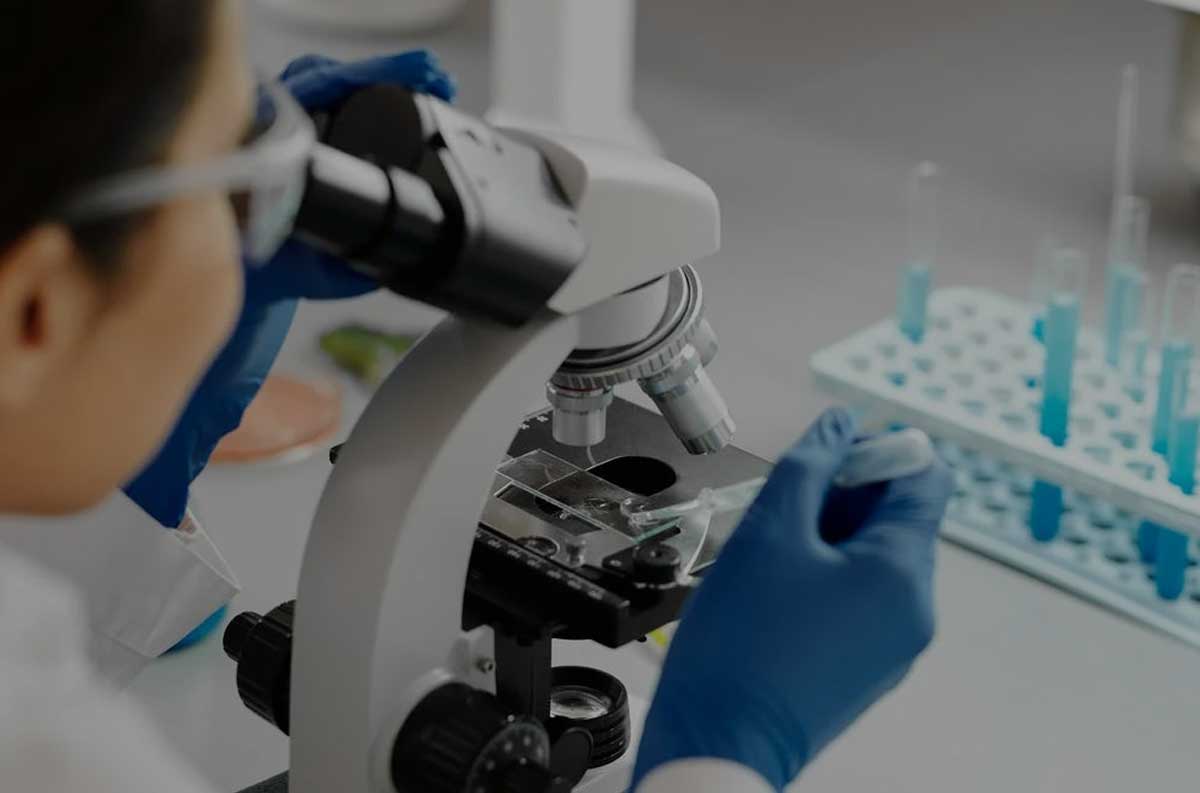6 types of modification technologies and characteristics of attapulgite
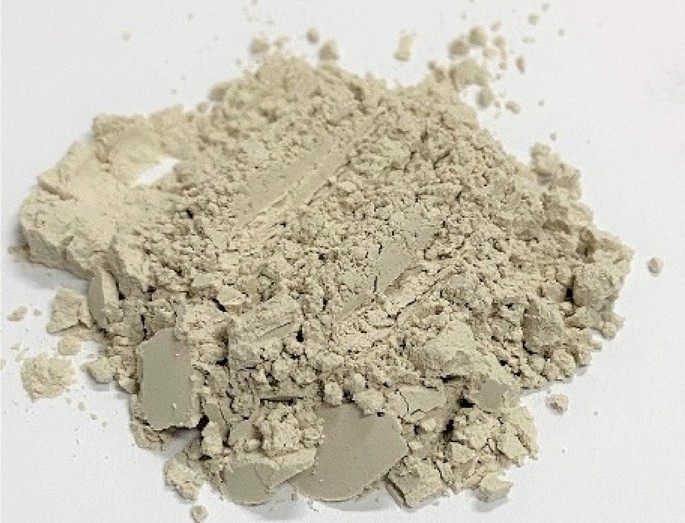
Attapulgite is a nano-layered chain-like hydrous magnesium-rich silicate clay mineral with abundant reserves. It is gradually used in the field of environmental governance due to its strong adsorption, safety and environmental protection. The research and development of new modified attapulgite And promotion has also received more and more attention.
1. Thermal modification
Attapulgite removes coordination water, zeolite water, crystal water and structural water in the crystal structure under heating conditions, thereby increasing the specific surface area and pore size of attapulgite. The study found that at around 110°C, the attapulgite mainly removes the adsorbed water and zeolite water on the outer surface; between 250 and 650°C, as the temperature increases, the crystal water is gradually and completely removed; when the temperature is greater than 800°C, the The attapulgite changed from a rod-like morphology to a spherical aggregate, the pore volume and specific surface area decreased, and the adsorption capacity weakened. Therefore, the heat treatment of attapulgite is generally selected at 500-800 °C.
2. Acid-base salt modification
Acid modification is to use hydrochloric acid, nitric acid or sulfuric acid to remove carbonate-like associated minerals such as quartz, montmorillonite and kaolinite in attapulgite clay, so as to dredge the pores and increase the number of active sites. Alkali treatment and salting modification are both metal ions in the modifier and cations such as Fe3+, Mg2+, Na+ between the attapulgite layers to exchange ions, making the surface structure charge unbalanced to enhance the adsorption activity. The effect of acid-base salt modification is affected by the concentration, and the waste liquid after modification may cause secondary pollution.
3. Microwave treatment and ultrasonic treatment
Microwave treatment is to use microwave heating to make the internal structure loose and porous to increase the specific surface area. Its principle is similar to roasting treatment, but the microwave method heats evenly and can greatly shorten the heating time. It is expected to replace traditional heat treatment as a green processing technology. Ultrasonic treatment is the use of ultrasonic cavitation to generate high temperature, high pressure or strong shock waves to peel off clay particles and disperse attapulgite aggregates to improve the dispersion of attapulgite.
4. Surfactant modification
Surfactant modification is to embed or coat surfactants on attapulgite under acidic and alkaline conditions, so as to enhance the adsorption capacity of attapulgite for specific substances. Because the surface of attapulgite is often negatively charged, cationic surfactants are generally used, and the most commonly used ones are alkyl trimethyl quaternary ammonium salts and amine salts.
5. Coupling agent modification and graft modification
The coupling agent is a kind of amphoteric substance containing both hydrophilic groups and hydrophobic groups, which can improve the compatibility of attapulgite and organic matter through the reaction of hydrophilic groups with hydroxyl groups on the surface of attapulgite. Surface grafting modification utilizes the copolymerization reaction of organic molecules and attapulgite to graft organic matter onto the surface of attapulgite to enhance the adsorption capacity of organic pollutants. In practical applications, the attapulgite is often treated with a coupling agent first, and then grafted.
6. Hydrothermal carbonization
In recent years, hydrothermal carbonization technology is also a relatively popular modified organic method. Its principle is similar to graft modification, mainly using glucose, fructose, cellulose and chloroacetic acid as carbon sources, and the hydroxyl , carboxyl group, ether bond, aldehyde group and other organic functional groups grafted onto attapulgite to improve its adsorption performance.
Development status of functional silane industry
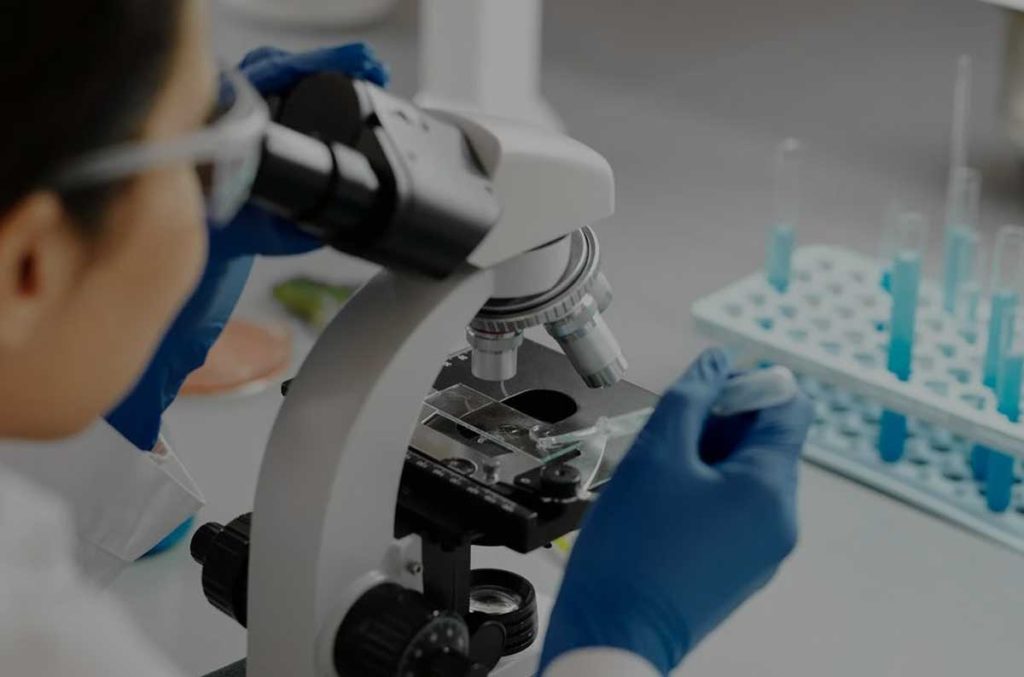
The general formula of functional silane is RSiX3, where R represents groups such as amino group, vinyl group, epoxy group and methacryloxy group. Such groups are easy to react with functional groups in organic polymers, so that silane and organic Polymer link. X represents a group that can be hydrolyzed, such as halogen, alkoxy, acyloxy, etc., and is used to improve the actual bonding strength between the polymer and the inorganic substance.
Functional silane contains both organophilic and inorganic functional groups. It can be used as an interface bridge between inorganic materials and organic materials or directly participate in the crosslinking reaction of organic polymer materials, thereby greatly improving the performance of materials. It is a very important and widely used Auxiliary.
There are different classification methods for functional silanes: according to the relative substitution positions of active organic groups and Si, they can be divided into two types: γ-substituted and α-substituted; Base silane, epoxy silane, and methacryloxy silane are domestically produced and consumed varieties; functional silanes can be divided into silane coupling agents, silane crosslinking agents and other functional silanes according to their uses.
1. Main application fields of functional silane
The application fields of functional silane mainly include: composite materials, rubber processing, plastic processing, sealants, adhesives, coatings, metal surface treatment and building waterproofing, etc., and are mainly used in high-tech industrial products.
From the perspective of global functional silane consumption, rubber processing accounted for 32.4%, composite materials accounted for 18.5%, adhesives accounted for 16.7%, plastic processing accounted for 14.8%, and coatings and surface treatment accounted for 11.1%.
2. Market size of functional silanes
In 2002, the global functional silane production capacity was only 135,000 tons, the output was 103,000 tons, and the operating rate was 76.3%. By 2018, the global functional silane production capacity will be 596,000 tons, the output will be 415,000 tons, and the operating rate will be 69.6%. Global functional silanes have developed rapidly in the past 20 years, with an average annual compound growth rate of nearly 10%. In 2021, the global functional silane production capacity will be about 765,000 tons, and the global functional silane output will be about 478,000 tons. The output in 2021 will increase compared to 2020. It is estimated that the global functional silane production capacity will be 762,000 tons in 2023, with an average annual growth rate of about 5.0% from 2019 to 2023; the output is expected to reach about 538,000 tons in 2023, with an average annual growth rate of about 5.3% from 2018 to 2023.
It is foreseeable that as the functional silane industry continues to eliminate small producers with backward production capacity and environmental protection standards. The industry will present a competitive landscape dominated by large-scale manufacturers. Enterprises with independent research and development capabilities, mastery of core technologies, and strong capital and scale advantages will have stronger competitiveness.
Application prospect of powder modification of traditional Chinese medicine
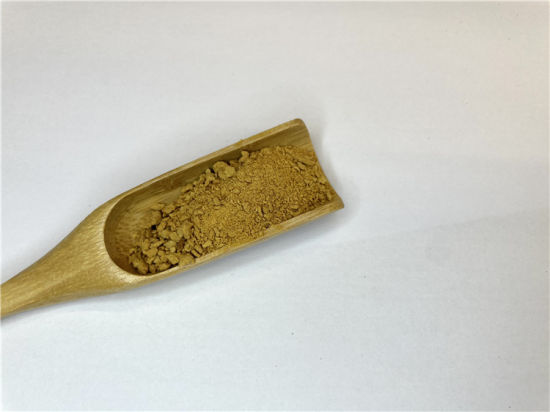
The purpose of modifying traditional Chinese medicine powder is to ensure the dispersion uniformity of the material, design the appearance and smell of the powder according to the needs, prevent the loss of active ingredients, improve the dissolution rate of insoluble ingredients, reduce the hygroscopicity of the powder, and improve the powder. liquidity, etc.
1. The basic idea of traditional Chinese medicine powder modification
The modification of traditional Chinese medicine powder is affected by many factors, such as the properties of raw material powder, modifier and formula, modification process, modification equipment, etc. According to the factors affecting the modification of traditional Chinese medicine powder, the basic idea of traditional Chinese medicine powder modification is as follows:
(1) According to the properties of the raw material powder (specific surface area, particle size and distribution, specific surface energy, surface physical and chemical properties, agglomeration, etc.), select the appropriate modifier formula (species, dosage and usage).
(2) According to the properties of the raw material powder and the determined modifier formula, select the Chinese medicine powder modification process that meets the application conditions. The basic principle for selecting the modification process of traditional Chinese medicine powder is that the modifier has good dispersibility, which can realize the uniform dispersion of the modifier in the powder particles. At the same time, the modification process is required to be simple, the parameters are controllable, and the product quality is stable. Low energy consumption and little pollution.
(3) When the formulation and process of the modifier are determined, it is particularly critical to select the appropriate modification equipment. The selection of high-performance modification equipment can make the dispersion of the powder and the modifier good, and the contact or interaction opportunities between the powder and the modifier are equal; the modification conditions of the powder are controllable, and the energy consumption and wear per unit product are less. No dust pollution, stable operation, etc.
(4) Establish a complete set of characterization methods for modified particles of traditional Chinese medicine powder.
2. The application prospect of powder modification of traditional Chinese medicine
In traditional Chinese medicine preparations, solid preparations account for 70% to 80%, and the dosage forms mainly include powders, granules, capsules, tablets, suspensions, etc. In view of the special properties of traditional Chinese medicine powder itself, it has been found from previous research and practice that modification of traditional Chinese medicine powder can enhance the application value of traditional Chinese medicine powder to a certain extent.
In the past 20 years, with the development of science, excellent pharmaceutical excipients and high-efficiency rotary tablet presses that can be used for direct powder compression have been successfully developed, which has promoted the development of direct powder compression. In some countries, more than 60% of varieties use powder However, traditional Chinese medicine powder has problems such as easy moisture absorption, high viscosity, and poor fluidity. The production of Chinese medicine tablet varieties is still dominated by wet granulation and tablet compression, and the utilization rate of powder direct compression technology is extremely low.
The modification of traditional Chinese medicine powder can effectively improve the hygroscopicity and fluidity of traditional Chinese medicine powder, and provide more space for direct compression of traditional Chinese medicine powder. With the gradual strengthening of the understanding of traditional Chinese medicine powder modification technology, the continuous improvement of research on excellent surface modifiers and high-performance modification equipment, the application prospect of traditional Chinese medicine powder modification technology in the field of traditional Chinese medicine is broader.
4 Major Modification Technologies of Kaolin
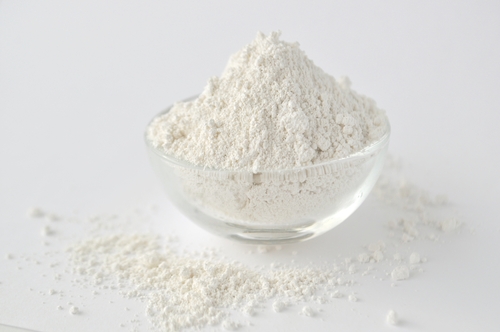
Kaolin is widely used. With the continuous innovation of science and technology, all walks of life have higher requirements for various indicators of kaolin, especially the demand for high-quality kaolin in papermaking, coatings, rubber and other industries continues to increase. Modification of kaolin can change the physical and chemical properties of its surface, thereby enhancing its added value to meet the needs of modern new technology, new technology and new materials.
At present, the commonly used modification methods include calcination modification, acid-base modification, grinding and exfoliation refinement treatment, and intercalation and exfoliation modification.
1. Calcination modification
Calcination modification is the most commonly used and mature modification method in the kaolin industry, especially for coal series kaolin, the calcination modification can remove the organic matter and obtain high whiteness and high quality kaolin products. There are many factors that affect the calcined quality of kaolin. Raw material quality, raw material particle size, calcined system, calcined atmosphere and the selection of additives all have a significant impact on the quality of calcined kaolin.
Calcining kaolin will cause a certain change in its crystal structure. Under low-temperature calcination, part of the organic matter and physically adsorbed water in kaolin will gradually detach. When calcined to 500-900 ° C, kaolin will dehydroxylate, destroy the crystal structure, and become amorphous. The layered structure collapses, the specific surface area increases, and the activity also increases accordingly. The kaolin obtained by calcination at this temperature stage is called metakaolin. When the calcination temperature reaches about 1000°C, kaolinite undergoes a phase transformation to form an aluminum-silicate spinel structure; when the calcining temperature reaches above 1100°C, mullite transformation occurs.
2. Acid-base modification
The acid-base modification of kaolin can effectively improve the adsorption and reactivity of the powder surface. The calcined coal-based kaolin was modified with hydrochloric acid and sodium hydroxide respectively, and the treatment conditions corresponding to the best oil absorption value were obtained. Since the calcined kaolin formed tetrahedral Al with acid reactivity, after hydrochloric acid modification The leaching of Al element in kaolin greatly enriches the pore structure of kaolin; the modification of sodium hydroxide can leach Si element in calcined kaolin, which increases the small pore structure, because a part of SiO2 in kaolin is transformed into free SiO2 is easy to react with alkaline substances.
The leaching of metal oxide impurities in acid-modified kaolin can also enrich the pores of kaolin and further improve its important performance parameters such as pore size, particle size distribution, and specific surface area. With the increase of alkali treatment time, the pore size distribution of calcined coal-series kaolin becomes wider, the specific surface area decreases, the pore volume increases, and the cracking activity and selectivity increase.
3. Intercalation/exfoliation modification
The intercalation and exfoliation modification of kaolin and the preparation of ultrafine powder are an important means to improve the quality of kaolin, and it is of great significance to improve the plasticity, whiteness, dispersibility and adsorption of kaolin. The structure of kaolin is composed of silicon-oxygen tetrahedrons and aluminum-oxygen octahedrons, which are periodically and repeatedly arranged. It lacks expansibility, and it is difficult to intercalate with organic matter. Only a few organic molecules with small molecular weight and strong polarity can be inserted into the kaolin layer. , such as formamide, potassium acetate, dimethyl sulfoxide, and urea.
4. Grinding and peeling treatment
The particle size of kaolin is an important indicator. In the paper-making filler coating industry, the peeled kaolin is coated on the surface of the paper. These flakes of kaolin are interlaced, superimposed and parallel to the surface of the paper, and the paper will be smoother, whiter, Brighter, and the ink will not produce effects such as watermarks after printing.
Commonly used kaolin grinding and stripping methods include dry superfine grinding, wet grinding, extrusion and chemical immersion. Dry pulverization generally involves pulverizing kaolin raw materials in jet mills, cyclone autogenous mills, high-speed mechanical impact ultrafine pulverizers and vibratory mills. In order to control particle size grades, classification and other processes are generally required.
There are many types of powder surface modifiers, how to choose?

Surface modifier is the key to achieve the expected purpose of powder surface modification, but there are many types and are highly targeted. From the perspective of the interaction between surface modifier molecules and the surface of inorganic powder, it should be selected as much as possible. Surface modifier for chemical reaction or chemical adsorption on the surface of powder particles, because physical adsorption is easy to desorb under the action of strong stirring or extrusion in the subsequent application process.
Surface Modifier Selection Principles
In actual selection, in addition to considering the type of adsorption, other factors must also be considered, such as product use, product quality standards or requirements, modification process, cost, and environmental protection.
(1) The purpose of the product
This is the most important consideration in selecting surface modifier varieties, because different application fields have different technical requirements for powder application properties, such as surface wettability, dispersibility, pH value, electrical properties, weather resistance, gloss, antibacterial properties, etc., which is one of the reasons to choose the variety of surface modifiers according to the application.
For example: Inorganic powders (fillers or pigments) used in various plastics, rubber, adhesives, oily or solvent-based coatings require good lipophilicity on the surface, that is, good affinity or compatibility with organic polymer base materials properties, which requires the selection of surface modifiers that can make the surface of inorganic powder hydrophobic and lipophilic;
When selecting calcined kaolin for coating cable insulation fillers, the influence of surface modifiers on dielectric properties and volume resistivity should also be considered;
For the inorganic pigments used in ceramic blanks, it is not only required to have good dispersibility in a dry state, but also to have a good affinity with the inorganic blanks and be able to disperse evenly in the blanks;
For surface modifiers of inorganic powders (fillers or pigments) used in water-based paints or coatings, it is required that the modified powders have good dispersion, sedimentation stability and compatibility in the water phase.
At the same time, the components of different application systems are different. When selecting a surface modifier, the compatibility and compatibility with the components of the application system must also be considered to avoid the failure of other components in the system due to the surface modifier.
(2) Modification process
Modification process is also one of the important considerations in selecting surface modifier varieties. The current surface modification process mainly adopts dry method and wet method.
For the dry process, there is no need to consider its water solubility, but for the wet process, the water solubility of the surface modifier must be considered, because only when it is soluble in water can it fully contact and react with the powder particles in a wet environment.
For example, stearic acid can be used for dry surface modification of calcium carbonate powder (either directly or after being dissolved in an organic solvent), but in wet surface modification, such as directly adding stearic acid, it is not only difficult to achieve The expected surface modification effect (mainly physical adsorption), and the utilization rate is low, the loss of surface modifier after filtration is serious, and the discharge of organic matter in the filtrate exceeds the standard.
A similar situation holds true for other types of organic surface modifiers. Therefore, for surface modifiers that cannot be directly water-soluble but must be used in a wet environment, they must be saponified, ammonized or emulsified in advance so that they can be dissolved and dispersed in an aqueous solution.
In addition, process factors such as temperature, pressure and environmental factors should also be considered when selecting surface modifiers. All organic surface modifiers will decompose at a certain temperature. For example, the boiling point of silane coupling agent varies between 100-310°C depending on the species. Therefore, the selected surface modifier preferably has a decomposition temperature or boiling point higher than the processing temperature of the application.
(3) Price and environmental factors
Finally, the price and environmental factors should also be considered in the selection of surface modifiers. Under the premise of meeting application performance requirements or optimizing application performance, try to use cheaper surface modifiers to reduce the cost of surface modification. At the same time, attention should be paid to the selection of surface modifiers that do not pollute the environment.
How to choose a grinding equipment?
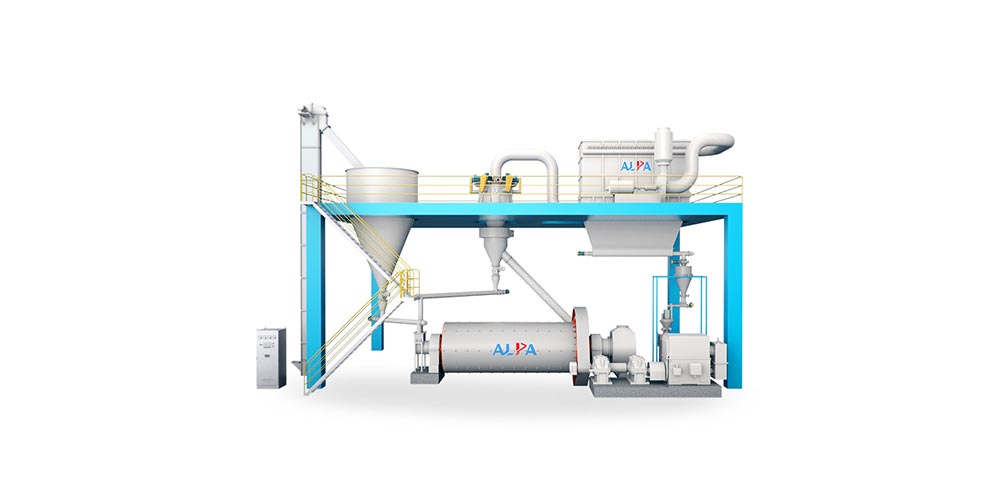
In the field of non-metallic ore grinding, various types of grinding equipment emerge in endlessly. As we all know, for non-metallic ore processing, one is to remove impurities and improve product purity; the other is to reduce the particle size of products to varying degrees.
In the process of reducing product particle size, the selection of grinding equipment is very important, which directly affects the utilization rate of mineral resources, production cost, product quality and economic benefits. Therefore, when manufacturers choose equipment, they need to obtain enough information to confirm their choice after actively communicating with the manufacturer according to their actual needs.
PART1: Ultrafine Impact Mill
Working principle: The material is conveyed by the feeding device to the crushing chamber of the main machine, and the material, the high-speed rotating device and the particles collide, collide, rub, shear, and squeeze each other to realize crushing. The crushed material is separated into coarse and fine powder by the classifying wheel, the coarse powder flows into the crushing chamber for grinding again, and the purified gas is discharged by the induced draft fan.
PART2: Jet Mill
Working principle: After the compressed air is cooled, filtered and dried, it forms a supersonic airflow through the nozzle and injects it into the rotary crushing chamber to make the material fluidized. Convergence produces violent collision, friction, and shearing to achieve ultrafine crushing of particles.
Compared with the ordinary mechanical impact ultrafine pulverizer, the jet pulverizer can pulverize the product very finely, and the particle size distribution range is narrower, that is, the particle size is more uniform; and because the gas expands at the nozzle to cool down, there is no accompanying heat in the pulverization process, Therefore, the pulverization temperature rise is very low, which is especially important for ultrafine pulverization of low melting point and heat-sensitive materials, but the jet mill also has a relatively common disadvantage, that is, high energy consumption.
PART3: Roller Mill
Working principle: The material is sent into the crushing chamber through the frequency conversion feeder, and the superfine crushing of the material is realized through the grinding roller extrusion, shearing and grinding. The pulverized material is transported to the classification area by the rising airflow, and under the action of the centrifugal force of the classification wheel and the suction force of the fan, the separation of coarse and fine powder is realized. The finer products are collected by the collector, and the coarse particles are returned to the crushing chamber for grinding again. The purified air is discharged by the induced draft fan.
PART4: Ball Mill And Classifying Production Line
Working principle: After coarse crushing, the material enters the ultra-fine ball mill from the lifting conveying equipment. The grinding medium in the mill impacts and grinds the material with the energy obtained when the mill rotates. The crushed material passes through the discharge bin. Enter the self-distributing micro-powder classifier for classification to realize the separation of coarse and fine powder. The qualified fine powder is collected by the collector, and the coarse particles enter the ball mill from the lower end of the classifier for crushing, and the purified gas is discharged by the induced draft fan.
According to the different materials, the ball mill line can choose the corresponding liner and grinding medium to ensure the purity and whiteness of the product. Reasonable system design reduces the investment in civil engineering and supporting equipment by 50% compared with other ball milling and grading production lines. It can be applied to the crushing of the following materials: ① soft materials, such as calcite, marble, limestone, kaolin, gypsum, barite, fly ash, slag, etc.; ② hard materials: silicon carbide, brown corundum, mullite, Ultra-fine cement, zircon sand, andalusite, refractory materials, etc.; ③ high-purity materials: quartz, feldspar, α-alumina, glass beads, phosphor, etc. Metal materials: zinc powder, aluminum powder, iron powder, molybdenum powder, etc.
How to add steel balls to the ball mill is suitable, and how to configure the steel balls?
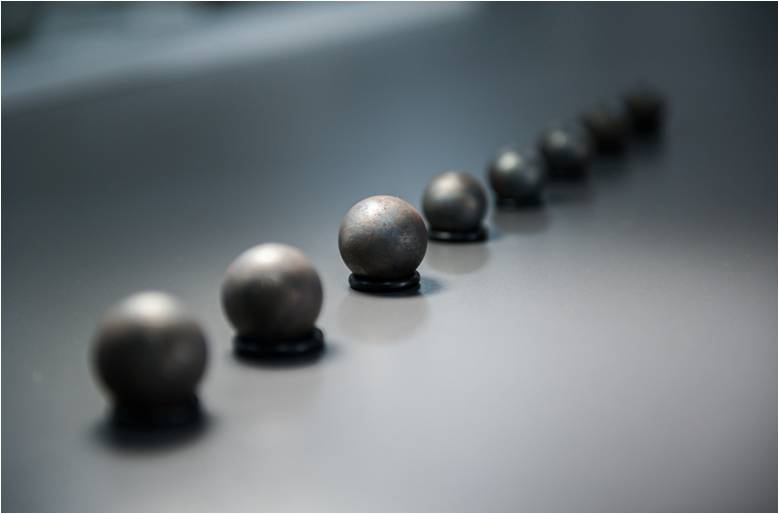
The steel ball of the ball mill is the grinding material medium of the ball mill equipment, and the grinding and peeling effect is produced by the collision and friction between the steel ball and the material between the steel balls of the ball mill. During the working process of the ball mill, whether the gradation of the steel balls in the grinding body is reasonable is related to the working efficiency of the equipment. Only by ensuring a certain proportion of various balls can it adapt to the particle size composition of the material to be ground, and a good grinding effect can be achieved.
Basic principles of steel ball grading in ball mill
1. To deal with ore with large hardness and coarse particle size, a greater impact force is required, and larger steel balls need to be loaded, that is, the harder the material, the larger the diameter of the steel ball;
2. The larger the diameter of the mill, the greater the impact force, and the smaller the diameter of the selected steel ball;
3. For double-compartment partitions, the diameter of the ball should be smaller than that of single-layer partitions with the same discharge section;
4. Generally, there are four levels of ball distribution. There are fewer large and small balls, and the middle ball is larger, that is, "less at both ends and more in the middle".
Factors to be considered in ball mill steel ball ratio
1. Equipment model, such as cylinder diameter and length;
2. Production requirements, that is, the user's standard for grinding fineness of materials;
3. Material properties refer to the initial particle size, hardness and toughness of the ground material;
4. Specifications and sizes, please pay attention to the size of the specifications, and you cannot blindly pursue large specifications.
Ball mill steel ball adding skills
The proportion of steel balls in the ball mill depends on the effective length of your mill, whether it is equipped with a roller press, the size of the feed material, the liner and structure used, the expected fineness of the sieve residue and the specific table, how many chromium balls to use, and the speed How much and other factors are comprehensively judged. After the ball mill is installed, the large and small gears of the ball mill need to be meshed, and the processing capacity must be gradually increased. After the ball mill has been running normally for two or three days, check the meshing of the large and small gears. When everything is normal, turn on the ball mill and add the remaining 20% steel balls for the second time. .
What are the physical and chemical changes of non-metallic ore powder after ultra-fine crushing?
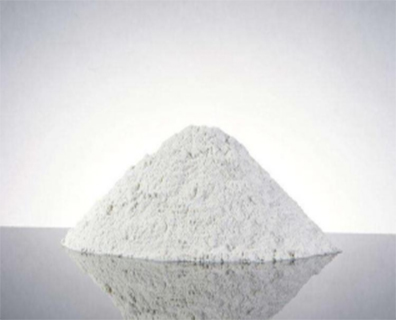
The ultra-fine pulverization process is not only a process of particle size reduction. When the material is crushed by mechanical force, the particle size reduction is accompanied by different changes in the crystal structure and physical and chemical properties of the pulverized material. This change is negligible for the relatively coarse crushing process, but for the ultra-fine crushing process, due to the long crushing time, high crushing strength and the particle size of the material is crushed to the micron level or smaller, these changes Occurs significantly under certain crushing processes and conditions.
Studies have shown that the above-mentioned mechanochemical phenomena will appear significantly or be detected only during the ultrafine pulverization or ultrafine grinding process. This is because ultra-fine crushing is an operation with high energy consumption per unit of crushed product, the strength of mechanical force is strong, the material crushing time is long, and the specific surface area and surface energy of the crushed material are large.
1. Changes in crystal structure
During the ultra-fine grinding process, due to the strong and persistent mechanical force, the powder material undergoes lattice distortion to varying degrees, the grain size becomes smaller, the structure becomes disordered, amorphous or non-crystalline substances are formed on the surface, and even Polycrystalline conversion.
These changes can be detected by X-ray diffraction, infrared spectroscopy, nuclear magnetic resonance, electron paramagnetic resonance and differential calorimetry.
2. Changes in physical and chemical properties
Due to mechanical activation, the physical and chemical properties of materials such as dissolution, sintering, adsorption and reactivity, hydration performance, cation exchange performance, and surface electrical properties will change to varying degrees after fine grinding or ultrafine grinding.
(1) Solubility
Dissolution rate of powder quartz, calcite, cassiterite, corundum, bauxite, chromite, magnetite, galena, titanite, volcanic ash, kaolin, etc. in inorganic acid after fine grinding or ultrafine grinding and solubility increased.
(2) Sintering performance
There are two main types of changes in the thermal properties of materials caused by fine grinding or ultrafine grinding:
One is that due to the increase in the dispersion of the material, the solid-state reaction becomes easier, the sintering temperature of the product decreases, and the mechanical properties of the product are also improved. For example, after dolomite is finely ground in a vibrating mill, the sintering temperature of refractory materials prepared with it is reduced by 375-573K, and the mechanical properties of the material are improved.
The second is that the change of crystal structure and amorphization lead to the shift of crystal phase transition temperature. For example, the transformation temperature of alpha quartz to beta quartz and cristobalite and that of calcite to aragonite are all changed by ultrafine grinding.
(3) Cation exchange capacity
Some silicate minerals, especially some clay minerals such as bentonite and kaolin, have obvious changes in cation exchange capacity after fine grinding or ultrafine grinding.
After grinding for a certain period of time, the ion exchange capacity and replacement capacity of kaolin both increased, indicating that the number of exchangeable cations increased.
In addition to bentonite, kaolin, and zeolite, the ion exchange capacity of others such as talc, refractory clay, and mica also changes to varying degrees after fine grinding or ultrafine grinding.
(4) Hydration performance and reactivity
The reactivity of calcium hydroxide material can be improved by fine grinding, which is very important in the preparation of building materials. Because these materials are inert or not active enough for hydration.
(5) Electricity
Fine or ultrafine grinding also affects the surface electrical and dielectric properties of minerals. For example, after impact crushing and grinding of biotite, its isoelectric point and surface zeta potential (Zeta potential) all change.
(6) Density
Natural zeolites (mainly composed of clinoptilolite, mordenite and quartz) and synthetic zeolites (mainly mordenite) were ground in a planetary ball mill, and the densities of the two zeolites changed differently.
(7) Properties of clay suspensions and hydrogels
Wet grinding improves the clay's plasticity and dry flexural strength. On the contrary, dry grinding increases the plasticity and dry bending strength of the material in a short period of time, but tends to decrease with the prolongation of grinding time.
Application of coal gangue in the field of dense ceramic materials
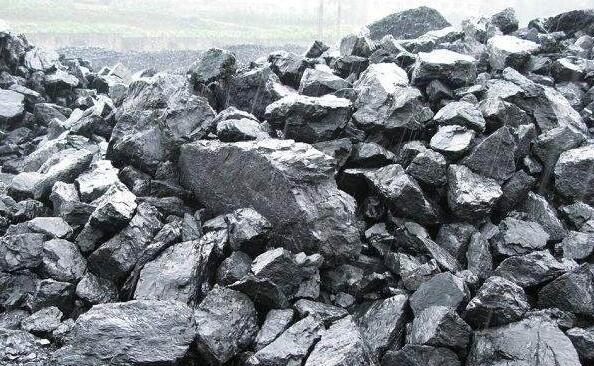
Coal gangue is the rock trapped in the coal seam, and it is also the waste in the process of coal mining and coal washing. At present, the accumulated coal gangue in the country is as high as several billion tons, which has caused serious damage to the ecological environment. As a recyclable resource, coal gangue has been widely used in many fields.
Through research, it is found that the main components in coal gangue are alumina and silica, and these compounds are commonly used raw materials for ceramic production. Coal gangue itself also has a large number of micropores and a high specific surface area. Therefore, coal gangue can be used to prepare ceramics and other materials with excellent properties such as high mechanical strength, acid and alkali corrosion resistance, and long life.
1. Dense mullite and its composite materials
Mullite (3Al2O3·2SiO2) is a high-quality refractory material with the characteristics of high density, good thermal shock resistance, good creep resistance, low expansion coefficient and stable chemical composition. In my country, there are few natural mullite reserves, and most of the mullite is artificially synthesized. Generally, kaolin and alumina powder are used as raw materials, and mullite materials are prepared by sintering or electrofusion. Since the content of kaolinite in coal gangue can generally reach more than 90%, mullite and mullite composite materials with excellent performance can be prepared by mixing gangue with auxiliary materials such as Al2O3 and calcination at high temperature. my country has also made some progress in the preparation of mullite and its composite materials from coal gangue.
Using high-alumina bauxite as the main raw material, together with coal gangue and a small amount of Al2O3 to prepare mullite clinker, the research found that mullite clinker with excellent performance can be fired at 1700 °C, and its apparent porosity is less than 25 %, bulk density ≥ 2.75g/cm3.
The pickled coal gangue was used as the main raw material, which was evenly mixed with alumina, and mullite was prepared by solid-state sintering. It will first increase and then decrease slightly, so the holding time for preparing mullite should be controlled within 2h.
Using bauxite and coal gangue as main raw materials, vanadium pentoxide (V2O5) and aluminum fluoride (AlF3) as additives, a crystal whose main crystal phase is mullite phase was prepared by solid state reaction. The research shows that: when aluminum When bauxite and silicon-alumina in coal gangue are mixed at a molar ratio of 2:3.05, the strength and hardness of the prepared mullite material have been significantly improved, and the performance is the best. Its volume density is as high as 2.3g/cm3, the apparent porosity is 23.6%, the water absorption rate is 10.55%, and the flexural strength is 114MPa.
The mullite-high silica glass composite material was successfully synthesized by using coal gangue and kaolin as raw materials and adding potassium feldspar. The study found that the sintering temperature of the mixture without adding potassium feldspar is above 1590°C, while the sintering temperature of the mixture with K2O ratio of 1.5% and adding potassium feldspar can be reduced to 1530°C. Therefore, adding a certain amount of potassium feldspar to the mixture can reduce the sintering temperature.
Using coal gangue as raw material, the gangue is activated by impurity removal, calcination and other processes, and the nano-mullite composite powder material is prepared by hydrothermal crystallization. The results show that the nano-mullite composite phase was prepared from the activated coal gangue powder under the conditions of a concentration of 2-4mol/L sodium hydroxide solution, a stirring temperature of 80-90°C, a heat preservation of 3h, and a liquid-solid ratio of 10mL/g. Powder, nano-mullite composite powder has a good crystallization effect, most of which are columnar crystals, the grain length is 50nm, and the average aspect ratio reaches 3.5.
2. Dense sialon and its composite materials
Using high-alumina coal gangue, iron concentrate powder, and coke powder as raw materials, the Fe-Sialon composite dense material was prepared by carbothermal reduction nitriding method at 1400-1550°C for 4 hours. It was found that the coke content exceeded 10% 1. The Fe-Sialon dense material prepared at 1500℃ for 4 hours has the most uniform grain distribution and the best performance.
Using coal gangue and natural clay as the main raw materials, the colloidal molding process was used to shape the green body, and the β-Sialon/SiC composite dense ceramic material was successfully synthesized by the carbothermal reduction nitriding process. The study found that the optimized process of colloidal molding can be used to produce a green body with a density as high as 1.12g/cm3, and a dense β-Sialon/SiC composite material can be produced after sintering.
Effect of Modified Tourmaline Powder on Properties of ABS Composites
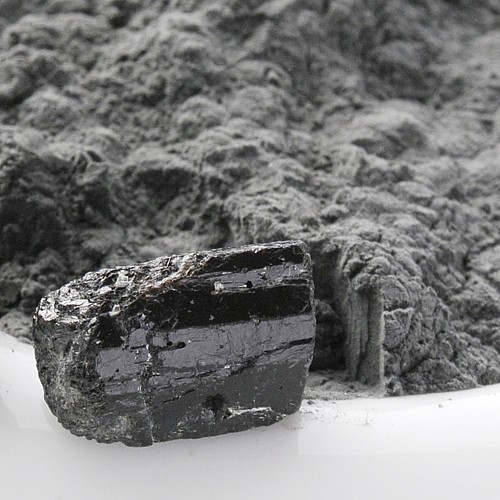
Tourmaline is used in water purification, medical treatment and other fields due to its piezoelectricity, far-infrared properties and the ability to release air negative ions. However, its raw material is a single tourmaline material, which limits its application and cannot meet people's requirements for modern materials. Therefore, new functional composite materials obtained by blending tourmaline and other materials have become a current research hotspot.
ABS resin is a graft copolymer composed of three monomers of acrylonitrile, butadiene and styrene. It has high strength and high toughness, strong corrosion resistance to acid, alkali and salt, and good molding processability. Well, the finished product has the characteristics of smooth surface, easy dyeing and electroplating, etc., and has been widely used in various fields.
The surface of tourmaline powder was modified with sodium stearate and titanate, and the modified tourmaline was blended with ABS resin to prepare tourmaline/ABS composite material. The results showed that:
(1) The tourmaline powder was successfully modified by sodium stearate and titanate, which reduced its hydrophilicity and improved its interface binding force with ABS resin.
(2) With the increase of the amount of modified tourmaline in ABS resin, the tensile strength and impact strength of tourmaline/ABS composites first increased and then decreased. Compared with the ABS resin without added tourmaline, when the amount of modified tourmaline was 2%, the tensile strength of the composite material increased by 11.30%; when the amount of modified tourmaline was 3%, the impact strength of the composite material The strength increased by 38.18%. The composite material can also release negative ions. When the amount of modified tourmaline is 3%, the negative ion release amount of the composite material is 456.5/cm2, which expands the application range of ABS resin.

